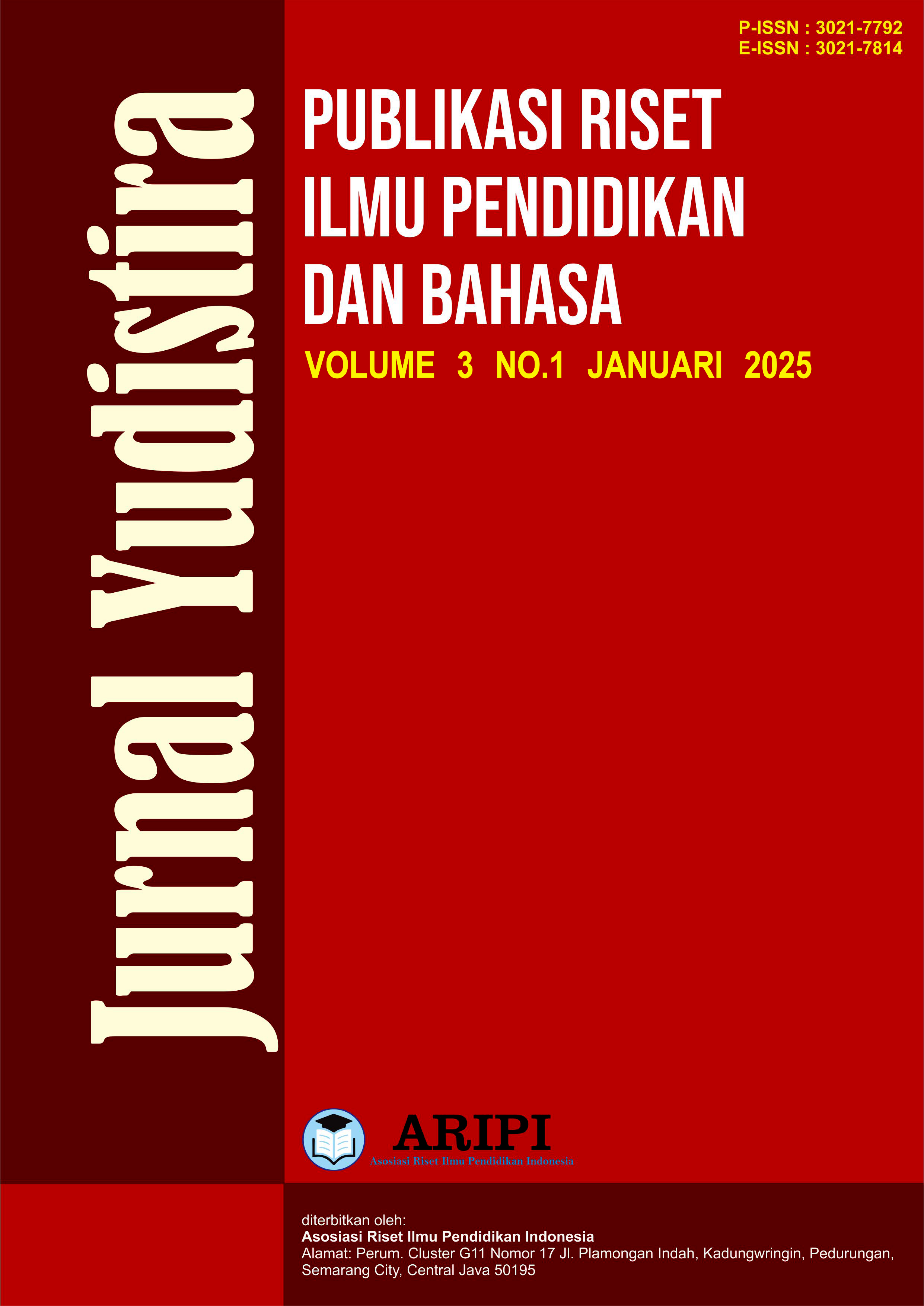Writing Citation Techniques in Writing Research Article on Scholar vs ScienceDirect Website
DOI:
https://doi.org/10.61132/yudistira.v3i1.1428Keywords:
Academic writing, citation strategies citation technique, google scholar, science directAbstract
Academic literacy requires the use of citation techniques. It will authenticate research, acknowledge the original authors, and assist readers in locating additional reading materials. The citation styles of authors and scholars who publish on ScienceDirect and Google Scholar are examined in this study. Five research papers from each of these platforms are examined in our analysis, which focuses on the three primary citation strategies—direct quotation, paraphrase, and description that are outlined in Wang's framework (Wang, 2006). Our analysis reveals that while both platforms effectively employ these tactics, there are discernible differences in their implementation. Specifically, ScienceDirect papers tend to have more seamless citation integration, which enhances readability and coherence. The ScienceDirect articles do a great job of contextualizing direct quotes, simplifying complex ideas, and providing in-depth descriptive analyses that improve understanding without disrupting the flow. This research significantly advances writing abilities by determining the best practices for integrating citations into academic discourse. It highlights the need of considering platform-specific considerations when writing academic publications, particularly for researchers who are not native English speakers, and how understanding how different citation styles impact readability and coherence facilitates scholarly writing.
Downloads
References
Aksnes, D. W., Langfeldt, L., & Wouters, P. (2019). Citations, citation indicators, and research quality: An overview of basic concepts and theories. SAGE Open, 9(1). https://doi.org/10.1177/2158244019829575
Anderson, M. H., Lemken, R. K. (2023). Citation Context Analysis as a Method for Conducting Rigorous and Impactful Literature Reviews. SAGE, 26(1), 77-106. https://doi.org/10.1177/1094428120969905
Arsyad, S., Zaim, M., & Susyla, D. (2018). Review and citation style in research article introductions: A comparative study between national and international Englishmedium journals in medical sciences. Discourse and Interaction, 11(1), 28-51. https://doi.org/10.5817/DI2018-1-28
Badenhorst, C. M. (2017). Literature reviews, citations and intertextuality in graduate student writing. Journal of Further and Higher Education, 43(2), 263-275. https://doi.org/10.1080/0309877X.2017.1359504
Dobakhti, L., & Zohrabi, M. (2018). Citation behaviours of applied linguists in discussion sections of research articles. Applied Research on English Language, 7(2), 215-236. https://doi.org/10.22108/are.2018.108465.1209
Haddaway, Neal R., et al. “Citationchaser: A Tool for Transparent and Efficient Forward and Backward Citation Chasing in Systematic Searching.” Research Synthesis Methods, vol. 13, no. 4, 7 May 2022, pp. 533–545. https://doi.org/10.1002/jrsm.1563
Kongpetch, S. (2021). Use of citation forms in academic writing of Thai undergraduates. International Journal, 9(1), 1-10. https://doi.org/10.15640/ijll.v9n1a1
Kumpulainen, Miika, and Marko Seppänen. “Combining Web of Science and Scopus Datasets in Citation-Based Literature Study.” Scientometrics, vol. 127, no. 10, 25 Aug. 2022, pp. 56135631. https://doi.org/10.1007/s11192-022-04475-7
Lerman, Kristina, et al. “Gendered Citation Patterns among the Scientific Elite.” Proceedings of the National Academy of Sciences, vol. 119, no. 40, 26 Sept. 2022. https://doi.org/10.1073/pnas.2206070119
Samanhudi, U., & O’Boyle, A. (2022). Citation practice in research articles in Indonesia-based journals and international journals. Journal of Teaching English for Specific and Academic Purposes, 741-751. https://doi.org/10.22190/JTESAP2104741
Shiau, Wen-Lung, et al. “What Are the Trend and Core Knowledge of Information Security? A Citation and Co-Citation Analysis.” Information & Management, vol. 60,no. 3, Apr. 2023, p. 103774. https://doi.org/10.1016/j.im.2023.103774
Tan Luc, Phan, et al. “A Co-Citation and Co-Word Analysis of Social Entrepreneurship Research.” Journal of Social Entrepreneurship, vol. 13, no. 3, 27 June 2020, pp. 1–16. https://doi.org/10.1080/19420676.2020.1782971
Wang, W. (2006). Newspaper commentaries on terrorism in China and Australia: A contrastive genre study [Unpublished doctoral dissertation]. University of Sydney
Warsidi, W. (2022). Genre analysis of English vs. Indonesian application letters. Journal of English Language Teaching and Linguistics, 7(2), 419-435. https://doi.org/10.21462/jeltl.v7i2.857
Warsidi., Irawan. A. M., Adnan. Z., Samad., I. A. (2023). Citation Studies in English vs. Indonesian Research Article Introductions (RAIs) in the History Discipline. Studies in English Language and Education, 10(2), 598-613. https://doi.org/10.24815/siele.v10i2.28343
Downloads
Published
How to Cite
Issue
Section
License
Copyright (c) 2024 Jurnal Yudistira : Publikasi Riset Ilmu Pendidikan dan Bahasa

This work is licensed under a Creative Commons Attribution-ShareAlike 4.0 International License.






